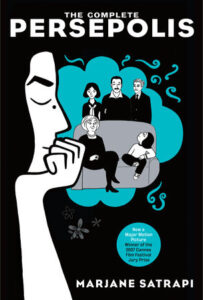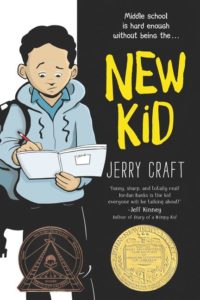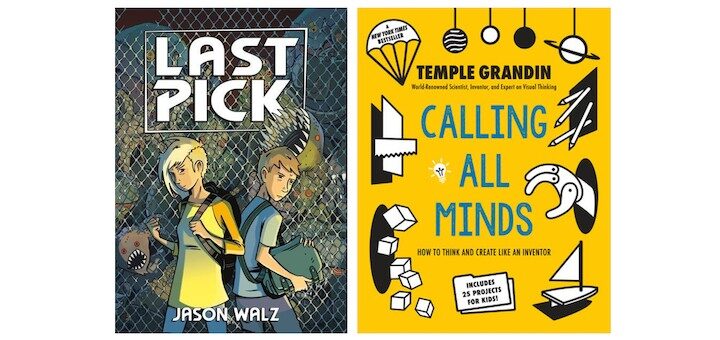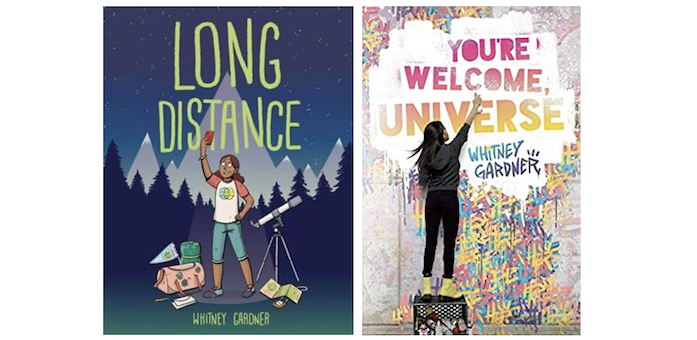Graphic Novels: Paired or Primary Reads?
By Jason D. DeHart

While the traditional view of comics has been that they are junkable and ready to be thrown out for meatier reading materials, recent attention to the medium has indicated that, indeed, graphic novels are real books.
If we accept that graphic novels belong on the classroom shelf and as part of instructional practices for middle grades readers and writers, the next question for educators is: Do graphic novels get to stand on their own, or should they be paired with additional texts?
This post will briefly explore that question, with notes about prominent authors and titles that can appeal to the adolescdent reader.
Solo or Paired?
Like most “or” questions, my answer is yes to both. Some graphic novels lend themselves to study on their own, while others can stand by themselves as sites for enjoyment.
Literacy scholar Louise Rosenblatt identified both efferent, or information-seeking, and aesthetic, or pleasure-driven, purposes for reading. Some of this aesthetic experience is driven by the reader. While many students gravitate to comics, others prefer romance novels, digital reads, and other forms.

Excerpts from classic graphic novel works like Persepolis by Marjane Satrapi can inspire students to examine the art and activism of texts created in support of Iranian women and similar texts about life in other cultures, linking one experience to a range of learning opportunities.
I will also note that efferent and aesthetic go back and forth, as Rosenblatt indicated. Reading experiences are often not entirely about pleasure or about information-gathering but some of both.
When Graphic Novels Stand Alone
Jerry Craft’s work immediately comes to mind when I think of a contemporary voice who has spoken about the nature of graphic novels as real books. Craft’s New Kid is not only a wonderful read on its own, lending itself to enjoyment and information with its many links to culture and the relevant questions that Craft poses, but it is also part of a fantastic three-book series.
Craft writes huggable books that include notions of daily life and themes of acceptance and navigating the challenges of contemporary existence, all in an accessible way.

Moreover, inferences can be found in the space between panels, as seen in the ways some panels establish settings and other panels showcase characters, and how changes in time, perception, and emotion can be displayed through changes in panels.
Wordless comics like Sara Varon’s Robot Dreams and Shaun Tan’s Arrival also point in vivid ways to the power of the image by itself. Readers can work with one another and with their teacher to make sense of the story behind the wordless images. Meaning is present in these books and through discussion, that meaning becomes “words.”
When Graphic Novels Stand Alongside
As a teacher who tries to read as widely as possible, I understand that while graphic novels can stand on their own, they can also be paired up with other types of texts in beautiful ways.
Books from authors like Renee Watson and Varian Johnson can stack up with Jerry Craft’s titles; contemporary memoirs can be linked with Raina Telgemeir’s graphic novel memoirs; Jason Walz’s Last Pick graphic novel series can be paired up with the work of Temple Grandin or authors who speak about or from the vantage point of diverse abilities.
When teaching Persepolis, students can also enjoy scenes from the animated film (so long as we embrace digital and filmed media as texts). When teaching Maus by Art Spiegelman, the work of Elie Wiesel can be considered for first-person prose experiences of the Holocaust.
There is even potential with author studies. Faith Erin Hicks, whose work often appears in graphic novel form, has written a young adult novel, Comics Will Break Your Heart. Whitney Gardner, the graphic novelist who has created Fake Blood and Long Distance, has also written the young adult novel, You’re Welcome, Universe. The possibilities for comparing an author’s storytelling methods across written text and graphic novel form are ripe for a closer look.
While I mentioned The Arrival as a standalone work, this story of a refugee experience can be linked to a number of titles, including Khaled Hosseini’s Sea Prayer, Victoria Jamieson and Omar Mohamed’s When Stars Are Scattered, the verse novel Other Words for Home by Jasmine Warga, and even longer prose works like What is the What by Dave Eggers.
Conclusion: Reading is Reading
My constant drive and desire in the classroom is to match up readers with books and to get students reading at whatever level works for them. What is more, I even want them to enjoy reading whenever possible – as well as write and create in response to reading.
While there are a variety of ways to capture young readers’ engagement, graphic novels prove fruitful for a wide range of readers and deserve equal status on our classroom and school bookshelves.
It is a work of creative joy to explore these books with students on their own merits, as well as to pair them up with songs, prose novels, verse novels, filmed works, and other types of texts. Literacy is a wide, deep sea.
Dr. Jason D. DeHart teaches English at Wilkes Central High School in Wilkesboro, North Carolina. Earlier he taught middle graders English in Cleveland, Tennessee for eight years and then served an assistant professor of reading education at Appalachian State University before returning to his first love, the secondary classroom.
Jason’s work has appeared in SIGNAL Journal, English Journal, The Social Studies, and here at MiddleWeb, including a 3-part series with teacher and school librarian Jennifer Sniadecki on using picture books with middle level readers. See all of Jason’s MiddleWeb posts here. His website, Book Love: Dr. J. Reads, offers book reviews and author interviews.
































